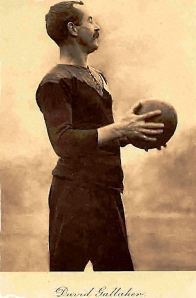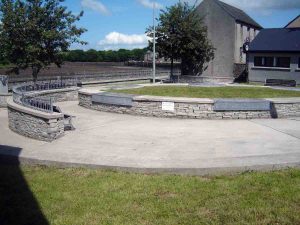The first touring All Blacks rugby side to play Munster was the famous “Original” All Blacks who lined out against them in the Markets Field, Limerick in November 1905. Munster were defeated 33–0. On that day, the victorious New Zealand All Blacks were captained by an Irishman from Donegal, the legendary Dave Gallaher.
I grew up in Donegal and am very familiar with one of Donegal’s most beautiful villages, Ramelton, which sits on the banks of the River Lennon. In this village on 30 October 1873 my namesake David Gallagher was born into a relatively comfortable family. His father was a shopkeeper, his mother a school teacher. When David was 5 years old, the family left Ramelton for the Bay of Plenty, New Zealand. They settled in Katikati, on the North Island where David’s mother Maria, became the local schoolteacher. Maria died in 1887 at the tragically young age of 42, leaving 11 children without a mother.
Two years later, the 17-year old Dave Gallaher (as he was now known) went to Auckland and played rugby – first for the Parnell Club and then the Ponsonby Club from 1896. In that year he also debuted at provincial level. His rugby career was interrupted when in 1901, he joined the New Zealand Contingent of Mounted Rifles to fight in the Boer War. At a farewell dinner, it is reported that the popular rugby player was ‘presented with a well filled purse of sovereigns’.
Safely home, he resumed his rugby career and played for New Zealand in the first ever encounter with the British and Irish Lions in 1904, and in 1905 he captained the legendary ‘Originals’ All Black team that toured Britain, France and North America.
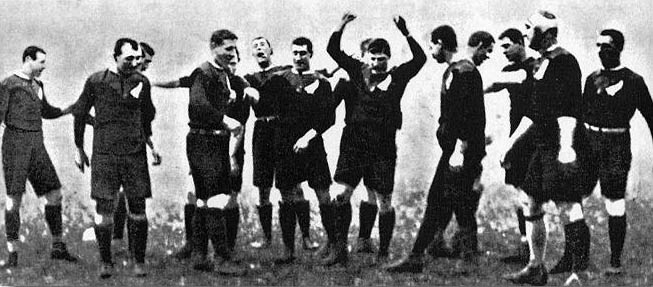
The 1905 Original All Blacks (Image via Wikipedia)
This was the first time that the New Zealand team toured beyond Australasia and it was the first time that the name ‘All Black’ had been used. The 5-month tour was a triumph for Gallaher’s team as they scored 976 points and conceded only 59 in 35 matches. They won 34 and lost only 1 against Wales (controversy still rages about a referee decision that cost them the match!).
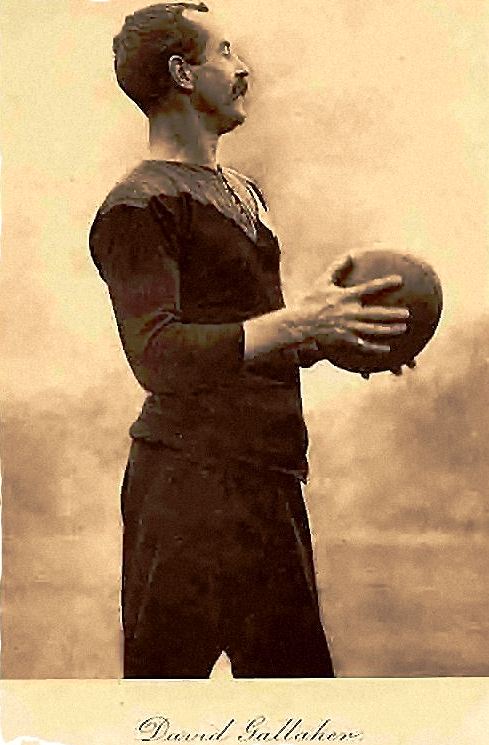
Dave Gallaher (Image via Wikipedia)
Following retirement as a team player, Dave Gallaher remained an influential figure in rugby. He continued as a selector for Auckland and for the All Blacks from 1907 to 1914. He co wrote a coaching manual, The Complete Rugby Footballer, that is still widely consulted to this day.
Dave volunteered to fight in World War 1 and it is believed that he changed his date of birth to enable him to do so, as he was exempt from conscription because of his age. (His youngest brother Douglas had been killed in action in France the previous year.)
Following training in England, on 26 June 1917 his unit went into action in the Third Battle of Ypres where they fought in the La Basse Ville area. At the rest camps in late August intensive training began for the battle that became known as Passchendaele. About the same time the region experienced the heaviest rain in 30 years that effectively turned the area into a muddy swamp. On October 1, he marched through the battle ravaged town of Ypres, and 3 days later….
”In drizzly rain, he had advanced through the deep mud of a small river and up the slopes ready to take over from the leading battalions for the second stage of the attack. A strong westerly wind chilled him to the bone and he waited for his orders. It was as he took over that his men came under heavy fire from a German stronghold named Korek, situated on the highest point of Graventafel ridge, and Dave Gallaher became one of the 330 New Zealanders to lose their lives in what is known as the Battle of Broodseinde”
Gallaher had been hit in the head by shrapnel and died some hours later, on October 4, just weeks short of his 44th birthday. Of the 9 brothers in the Gallaher family, 5 fought in the Great War. Douglas was wounded in action at Gallipoli on May 4 1915 and killed in action at Laventie, France on June 3 1916. Dave was killed in action on 4 October 1917 and Henry was killed in action on 24 April 1918. Henry’s twin brother Charles, was shot in the back in Gallipoli and survived for some years with a bullet lodged close to his spine. Laurence survived the war without any recorded injury.
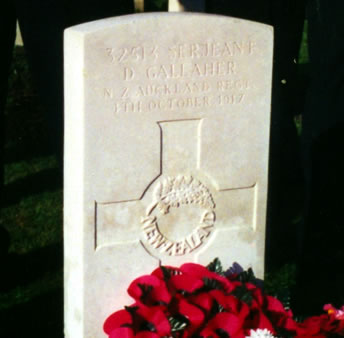
The Grave of Dave Gallaher (Image wikimedia.commons)
Dave Gallaher is buried at Nine Elms Cemetery, Poperinge, Belgium, not far from The Island of Ireland Peace Park in Messines, Belgium. His grave, which bears the New Zealand emblem the Silver Fern, so proudly worn on the All Black shirt, has become a place of pilgrimage for All Black teams touring France.
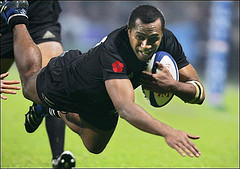
The All Blacks kit with embroidered Poppy (Image Wikimedia. Commons)
The All Blacks have also been known to wear an embroidered poppy on the jersey sleeve to honour their countrymen who died in the battlefields of Europe during both World Wars. 12 All Blacks died in World War 1 and 2 died in World War 2. Their team proudly remembers them and all New Zealanders who lost their lives on fields of conflict.
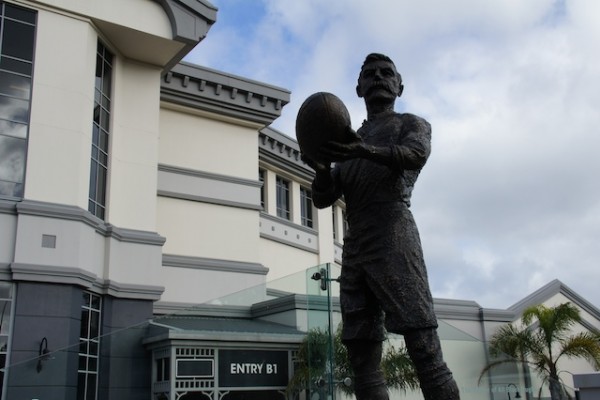
Bronze at Eden Park Stadium, Auckland. (Image Wikimedia.Commons)
The name of Dave Gallaher lives on and continues to be remembered in the world of Rugby. In 1922, the Gallaher Shield became the trophy for Auckland club competitions and since 2000 the Dave Gallaher Cup has been awarded to the winner of the first rugby test between New Zealand and France in any year. Standing outside Eden Park Stadium in Auckland is a bronze statue of Dave Gallaher. Standing 2.7 metres high, this imposing statue is fitting testament to the esteem in which Dave Gallaher is held.
Meanwhile in Donegal, Dave Gallaher is proudly remembered. His home town Ramelton has honoured him with the lovely Dave Gallaher Park .

Dave Gallaher Park, Ramelton, Co Donegal. (Image Ramelton Tidy Towns)
Just up the road in Letterkenny, the local rugby club has named their home ground ‘Dave Gallaher Memorial Park’. There was great excitement in the area in 2005 when the All Blacks visited Donegal to connect with and honour the remarkable Dave Gallaher, who changed the face of rugby forever.
Dave Gallaher, First All Blacks Rugby captain, Rugby legend, Donegal Man, Soldier, is remembered today 99 years after his death at the Battle of Broodseinde.
(From an original post on this blog in October 2011)
References
The history of Wales versus New Zealand at t Rugbyrelics.com
Rugby History at Rugby Football History- Rugby at War.
History Learning Site – Passchendaele at http://www.historylearningsite.co.uk/battle of passchendaele.htm
Ramelton at http://rameltontidytowns.squarespace.com
Dave Gallaher 1873- 1917 at http://www.davegallaher.com



